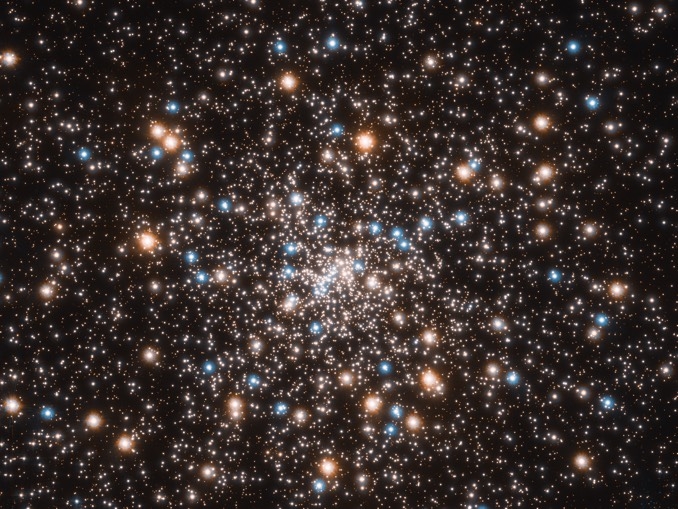A surprising swarm of black holes found in nearby globular cluster

The globular cluster NGC 6397 is one of the closest to Earth at a distance of 7,800 light years. Analysis of multiple observations over several years with the Hubble Space Telescope reveals the gravitational effects of multiple stellar-mass black holes. Image: NASA, ESA, T. Brown, S. Casertano, and J. Anderson (STScI)
11 February 2021 Astronomy Now
Black holes are thought to range between two extremes: from stellar-mass black holes that form when single, massive stars collapse to the supermassive behemoths millions to billions of times the mass of the Sun. Intermediate-mass holes, with the gravitational heft of hundreds to tens of thousands of stars, are thought to bridge the gap between the two extremes, but only a few candidates have been identified to date.
Likely habitats for intermediate black holes are the cores of globular clusters, the concentrated assemblies of ancient stars that are nearly as old as the cosmos. Researchers using the Hubble Space Telescope observed one of the closest globulars to Earth – NGC 6397 – looking for stellar motions that might indicate the gravitational influence of an intermediate black hole.
Instead, they were surprised to find signs of multiple stellar-mass black holes.
“We found very strong evidence for an invisible mass in the dense core of the globular cluster, but we were surprised to find that this extra mass is not ‘point-like’ but extended to a few percent of the size of the cluster,” said Eduardo Vitral of the Paris Institute of Astrophysics.
See full text